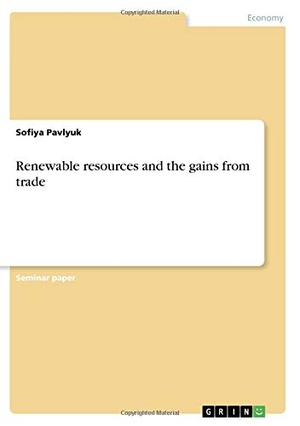Für statistische Zwecke und um bestmögliche Funktionalität zu bieten, speichert diese Website Cookies auf Ihrem Gerät. Das Speichern von Cookies kann in den Browser-Einstellungen deaktiviert werden. Wenn Sie die Website weiter nutzen, stimmen Sie der Verwendung von Cookies zu.
Cookie akzeptieren
Anonym
Renewable resources and the gains from trade
- GRIN Verlag
- 2018
- Taschenbuch
- 20 Seiten
- ISBN 9783668785908
Seminar paper from the year 2018 in the subject Economics - International Economic Relations, grade: 3, University of Lüneburg, language: English, abstract: Expansion and liberalization of world trade lasted for ages at the expense of the natural environment. In 2013, the financial volume of world trade amounted to 23.4 trillion US $, about a third of world GDP. At the same time, global environmental indicators show the impact of trade on the environment. Population growth and rising incomes fuel the demand for goods and services, which is often met by natural resources, especially land and water. Tripling of the world population over the last six decades
Mehr
Weniger
zzgl. Versand
in Kürze